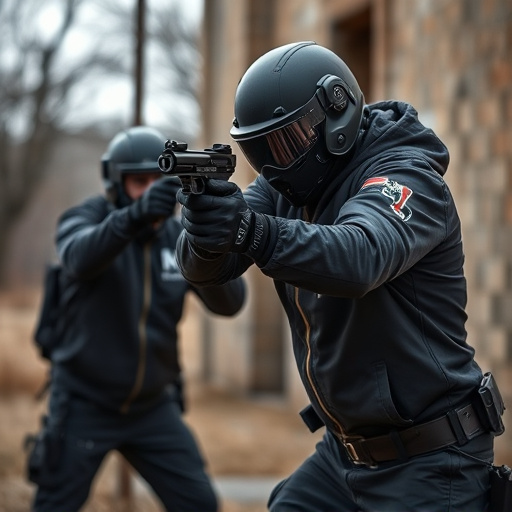Environmental conditions, including temperature, humidity, and wind speed, significantly affect pepper spray's effectiveness. These factors influence its concentration, coverage, and accuracy. Understanding these impacts is crucial for users to choose suitable pepper spray for specific climates, ensuring optimal protection against attackers.
In today’s world, personal protection devices like pepper spray are essential tools for self-defense. Understanding chemical irritants, specifically capsaicin, is crucial in optimizing their effectiveness. This article explores how environmental factors significantly influence the efficacy of pepper spray, from temperature and humidity to wind speed. We also delve into key considerations when choosing the right spray for optimal protection, ensuring you’re prepared for various scenarios.
- Understanding Chemical Irritants: Their Role in Personal Protection
- Environmental Factors: How They Influence Pepper Spray Efficacy
- Choosing the Right Spray: Considerations for Optimal Protection
Understanding Chemical Irritants: Their Role in Personal Protection
Chemical irritants play a pivotal role in personal protection devices, particularly in pepper spray. These substances are designed to cause discomfort and temporarily disable an attacker, providing the user with precious time to escape or defend themselves. Understanding how chemical irritants work is essential in evaluating their effectiveness under various environmental conditions.
The performance of pepper spray, for instance, can be significantly influenced by factors like temperature, humidity, and wind. In hot and humid environments, the irritant’s concentration may dissipate faster due to evaporation, reducing its impact. Conversely, cold temperatures can affect the spray’s aerosolization, potentially leading to less effective coverage. Environmental conditions thus act as a complex interplay that challenges the design and functionality of personal protection devices, emphasizing the need for ongoing research and development in this field.
Environmental Factors: How They Influence Pepper Spray Efficacy
Environmental conditions play a significant role in determining the efficacy and performance of pepper spray, an essential personal protection device. Factors like temperature, humidity, and wind speed can impact how well the spray disperses and irritates the target. For instance, in hot and dry environments, pepper spray tends to evaporate more quickly, reducing its effective range. Conversely, high humidity levels can cause the spray to linger longer, potentially increasing its irritation potential but also making it harder to aim accurately. Wind speed and direction are equally critical; strong winds can blow the spray back towards the user or dissipate it too rapidly, rendering it less effective.
Understanding these environmental factors is crucial for users to make informed decisions when choosing pepper spray for specific conditions. It ensures that the device remains reliable in various scenarios, providing the necessary protection when needed most.
Choosing the Right Spray: Considerations for Optimal Protection
Choosing the right pepper spray is crucial for optimal personal protection, and understanding how environmental conditions affect its performance is essential. Different factors like temperature and wind speed can significantly impact the effectiveness of the spray. For instance, in cold environments, some pepper sprays may freeze or reduce in potency, while strong winds can dissipate the spray’s active ingredients before reaching the target. Therefore, when selecting a personal protection device, consider the specific environmental conditions you’re likely to encounter. Look for sprays designed to withstand low temperatures and have a strong wind resistance to ensure maximum effectiveness when it matters most.
Chemical irritants, particularly pepper spray, play a vital role in personal protection devices, offering a non-lethal means of self-defense. Understanding how environmental conditions affect pepper spray efficacy is crucial for optimal protection. Factors like temperature, humidity, and wind can significantly impact the spray’s range and potency. By considering these variables and choosing the right spray, individuals can ensure they have the best defense in various scenarios. Remember, the right personal protection device tailored to specific needs and environmental factors can be a game-changer in potentially dangerous situations.
